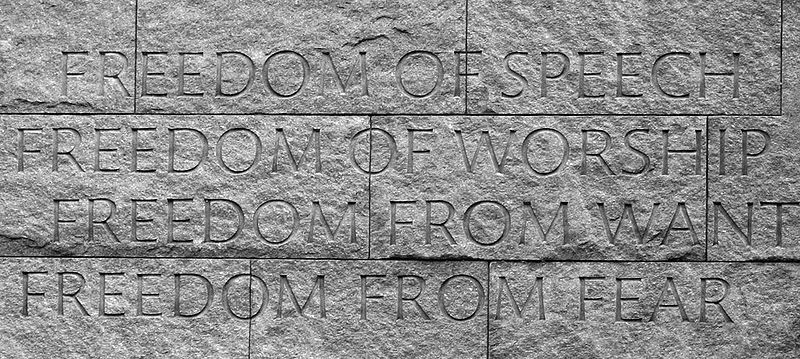English: In his 1941 State of the Union Address, as the nation contemplated the increasingly more inevitable prospect of being drawn into the war, President Roosevelt spelled out "Four Freedoms" as a reminder of what America must stand for.
The speech delivered by President Roosevelt incorporated the following section:
In the future days which we seek to make secure, we look forward to a world founded upon four essential human freedoms.
The first is freedom of speech and expression - everywhere in the world.
The second is freedom of every person to worship God in his own way - everywhere in the world.
The third is freedom from want, which, translated into world terms, means economic understandings which will secure to every nation a healthy peacetime life for its inhabitants - everywhere in the world.
The fourth is freedom from fear, which, translated into world terms, means a world-wide reduction of armaments to such a point and in such a thorough fashion that no nation will be in a position to commit an act of physical aggression against any neighbor - anywhere in the world.
That is no vision of a distant millennium. It is a definite basis for a kind of world attainable in our own time and generation. That kind of world is the very antithesis of the so-called "new order" of tyranny which the dictators seek to create with the crash of a bomb.
In 1943 during the Second World War, Illustrator Norman Rockwell completed the Four Freedoms series which was completed in seven months and resulted in him losing 15 pounds. The paintings were based on a speech by Franklin D. Roosevelt, who declared that there were four principles for universal rights: Freedom from Want, Freedom of Speech, Freedom to Worship, and Freedom from Fear. The paintings were published in 1943 by The Saturday Evening Post. The U.S. Treasury Department later promoted war bonds by touring the originals to 16 cities.



